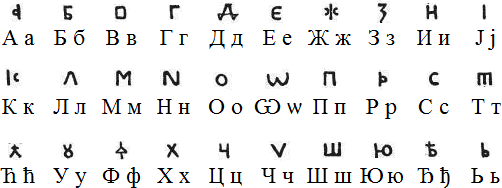Online since 1999, this dictionary allows the user to enter a word or phrase and responds with the Bosnian or English equivalent.
Because Bosnian is mutually intelligible with Serbian, this tool ought to help with transliterating Cyrillic script Bosnian.
The omission of diacritics will change your search results. Try searching for "Copic" vs. "Ćopič" to get an idea of what diacritics can do for a search.
Origin
Bosnian is a South Slavic language spoken mainly in Bosnia and Herzegovina by about 2.2 million people. On a formal level, Bosnian began to emerge as a distinct language after the break up of Yugoslavia in the 1990s. It became one of official languages of Bosnia and Herzegovina in 1994, along with Croatian and Serbian.
Bosnian is written with both the Cyrillic and Latin alphabets. Historically it was written with a version of the Cyrillic alphabet known as Bosnian Cyrillic from the late 10th century. This alphabet was only used in Bosnia. During the Ottoman era Bosnian was written with a version of the Arabic alphabet.
The first Bosnian dictionary, a rhymed Bosnian–Turkish glossary authored by Muhamed Hevaji Uskufi, was composed in 1631.
Bosnian is closely related to and mutually intelligible with Croatian, Serbian and Montenegrin. For more information see an article about Serbo-Croatian language issues.

Notable Historic Features
Type of writing system: alphabet
Direction of writing: left to right, horizontal
When printed, Bosnian Cyrillic letters are not connected at all, though they can be in cursive handwriting.
Bosnian Cyrillic alphabet was used from the 10th century utnil the 20th century.
Bosnian Cyrillic alphabet was never standardized and most letters had several different forms. See the above chart for standard forms.
Modern Bosnian Cyrillic alphabet has a few different letters from the above historic chart.
The order of the Mkhedruli letters is based on that of the Greek alphabet. The Georgian consontants with no Greek equivalents come at the end of the alphabet.
Wondering if your favorite English language novel has ever been translated? Index Translationum is one of the best sources for such information. You can search any number of fields - just author, title word, country of publication, translator, etc. You just need to specify the original language of publication and the language you are seeking to get a list of any and all translations. This was originally a printed publication and can be very helpful if you want to know if something was ever translated. The site, like its published version, is sponsored by UNESCO.